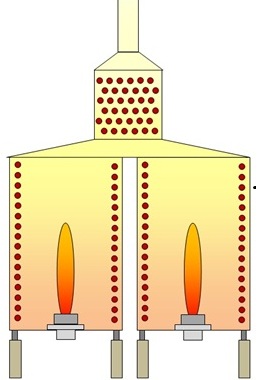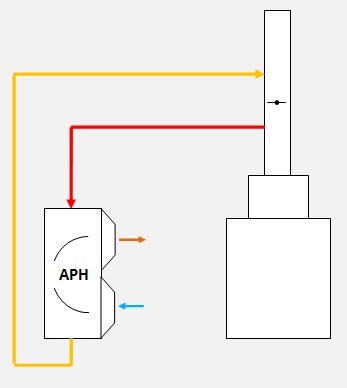Crude Oil Fired Heaters
What is a Crude Heater?
A Crude Heater, sometimes called a Crude Furnace, is a Fired Heater utilised to heat Crude Oil in a refinery. The Crude Oil process fluid is often heated beyond the point of vaporisation, producing a two-phase fluid mixture at the process outlet.
The Crude Heater is a critical unit within the refinery as it directly processes the key feetstock from which all subsequent refinery commercial products are derived.
Crude Oil Heater Design
Crude Heaters are most commonly designed as Cabin Heaters, with horizontal tubes in the radiant section. A major benefit of utilising horizontal tubes is that the crude oil process fluid can be drained from the coil during plant shutdown and allow easier maintenance activities such as cleaning.
For larger duty requirements, these Cabin Heater designs may consist of multiple radiant sections and a common convection section, which may also have secondary process streams to heat water or steam.
Cabin Heater with Twin Radiant Cell
Crude oil will frequently contain corrosive chemical species such as Sulphur, which will mean that higher coil metallurgy grades will be required. Typically, the metallurgy grade selected may range from P5 to 347H SS material, dependent upon the degree of corrosive components.
Due to the crucial role that a Crude Heater plays within the refinery, sometimes twin crude heaters are used, in order to increase reliability of performance in case one heater should fail
Crude Oil Heater Performance
The Crude Oil temperature requirements will be dependent upon the type of crude oil utilised. Typically, a crude heater will be specifically designed to accommodate one particular type of crude oil, with defined fluid physical property characteristics. Nevertheless, the refinery site in the future may have the need to alter the feedstock, thereby running a different type of crude oil through the heater.
Coking in Crude Heaters
Crude oil process fluids are generally sensitive to high temperatures and forming coke on the inner wall of the tubes. Therefore, crude heaters will be operated with a lower flux rate an other fired heaters in order to mitigate against excessively high film temperatures.
The formation of coke reduces the efficiency of heat transfer of energy to the bulk flowing fluid, which leads to higher coil temperatures and the associated strain, alongside an overall lower fuel efficiency.
Cleaning Crude Heater Coils
Whilst reducing the controlling firing rate during operation helps to maintain a suitable flux, the formation of coke is seldom avoided entirely. This means that periodic shutdown of the Crude Heater is required in order to drain the coils and remove the coke.
Steam-Air Decoking is a method which involves running medium pressure steam through the heater coils at high velocity whilst firing the burners. The heat release from the burners act to heat the coke layer whilst the flowing steam act to dislodge and remove the coke, whilst also protecting the coils from over-heating.
Pigging is another technique which involves using running a mechanical device 'pig' through the coils to dislodge the coke layer.
Energy efficiency
Air Pre-heaters (APH) are used to increase the energy efficiency of the fired heater, with the usual arrangement whereby incoming combustion air is warmed in a heat exchanger (APH) with use of the flue gas exiting the convection as the hot medium.
In cases where Air Pre-heaters are used, the expected fuel efficiency may achieve between 90% - 95%, thereby optimizing fuel consumption and maximising profitability.
Vacuum Crude Heater
The refinery process may require the heated crude oil process to enter a Vacuum Tower after leaving the heater. The Vacuum Tower is operated under negative pressure, therefore the process outlet pressure of the Crude Heater will be negative.
Designing a Crude Heater is one of the most complicated type of process fired heater types, since a delicate balance is required between available pressure drop, outlet temperature requirements, vaporization and fluid velocity.
The vacuum heater will usually require multiple tube sizes within the radiant section, carefully gradually increasing in tube diameter to the outlet tubes. The reason for increasing the tube diameters, is to increase the tube flow cross-sectional area, thereby controlling the velocity, thus pressure drop, of the crude oil process fluid as it undergoes somewhat aggressive vaporisation.
The heater should be designed to allow for adequate pressure drop to meet particular vacuum conditions (temperature and pressure) for the adjacent vacuum column.









.png)


Comments
Post a Comment